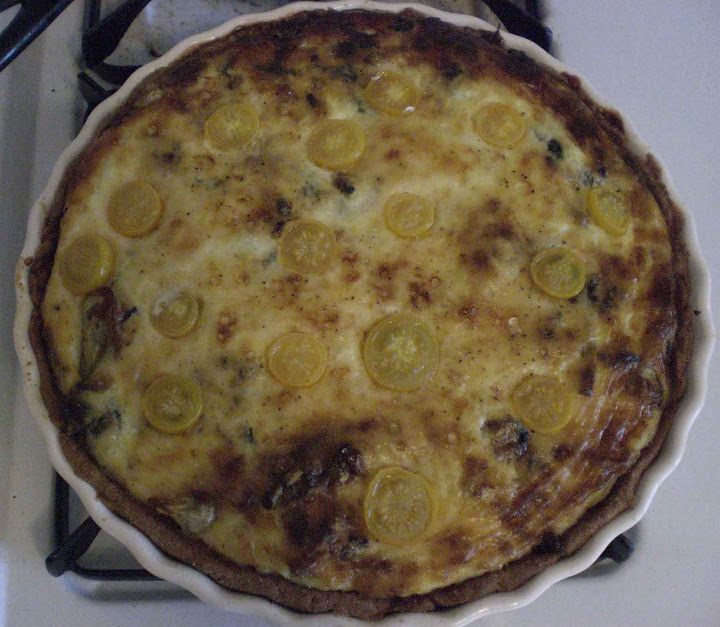I think quiche is one of our favorite meals. Perhaps because there are so many variations, perhaps because you can throw in so many greens, perhaps because it is so rich, or perhaps because we make it so well (just to toot our own horn).
It's also a great partnership meal for us, since I make the crust and Jeremy does the rest. But we're both equally capable of making the whole thing on our own. Here, in photos, is the recipe and details for the quiche I made last week.
The CrustOf course you can just buy a crust from the store, but it's much better to make your own. We can usually get three quiche crusts out of the following recipe and the leftover dough can be kept in the freezer. I got this recipe from my mom. It was one of those emergency-recipe-question calls where I had volunteered to make dinner for the house and I just wasn't sure what recipe to use and I needed help! My mom probably pulled this out of a cookbook I have a copy of, but for some reason I still trust this handwritten recipe more: scribbled on two sheets of lined paper, barely stuck together at the top with the remnants of the rubbery bit that holds together these note pads; random notes; stained with different food bits and spills; and some of the words nearly gone. Here it is, in all it's glory, as originally written down:
2 1/2 c. flour
1 tsp salt
1 tbsp fresh herbs (rosemary, sage, oregano - chopped really fine) or 1-2 tsp dried
8 tblsp unsalted cold butter
6 tblsp vege shortening or margarine
5-6 tblsp ice water (2 tblsp vinegar or lemon juice to one cup water)
flour, salt, herb; blend in butter, etc. sprinkle water 1-2 tblsp at a time
when a ball - its enough
knead a little, divide; flatten; wrap airtight; fridge 30+ min; roll out, put in pan
prick w/ fork
line w/ foil; put in beans - 12 minutes 375 degrees
lose foil + beans; bake 5 min
I know - it's amazing that I use the recipe, it hardly makes sense! It's actually quite easy and I'll explain it a bit more now - but I just had to share that silly recipe I wrote down.
1. Measure a cup of cold water and add 2 tablespoons of lemon juice. Put this in the fridge or freezer till you're ready for it.
2. In a bowl, mix the flour, salt, and herbs. (Note - if you don't put in the herbs you can use the dough for pies as well.)
3. Work the butter and shortening into the dough - with forks, pastry cutter thing, or grate the stuff in (but do use BOTH butter AND shortening).
4. Sprinkle the cold lemon water over the flour mix a few tablespoons at a time and mix the dough up. When it all comes together and you can make a ball, stop adding water. The recipe says 5-6 tablespoons of water, but that's an outrageous lie. It takes more than that, but the amount depends on your flour (I think). I use whole wheat pastry flour and it seems to need a lot of water to keep it all sticking together. But add it a little at a time!
5. You can knead the dough a little bit, but I don't think I do that. Any kneading I do happens in the process of getting the dough to stick together, dividing it into two parts, forming balls, and then flattening those a bit.
6. Once you've got those dough balls, wrap them up in plastic wrap or plastic bags and put them in the fridge for at least 30 minutes.
7. Take your dough out, roll it out to the thickness you like and fit it into your quiche pan.
8. Prick the bottom with a fork - this keeps it from forming giant air bubbles when it pre-bakes.

9. Here is where I start to diverge from the original recipe. Preheat the oven to 45o degrees.
10. Line your crust with foil and pour in some dry beans, like garbanzos, or other things to weigh down the crust. This also keeps it flat - though sometimes I wonder if its necessary. I do it anyway. Bake in preheated oven for 5 minutes. After this, take out the foil and beans (or whatever) and you're ready to put in the quiche ingredients (which hopefully you've been working on while the dough was chilling and pre-cooking).
(Local ingredients here are the butter, flour, and herbs from our garden.)
The FillingThe filling can be just about anything. Jeremy is a big fan of the Quiche Lorraine recipe in his beloved, and battered, New York Times Cookbook.
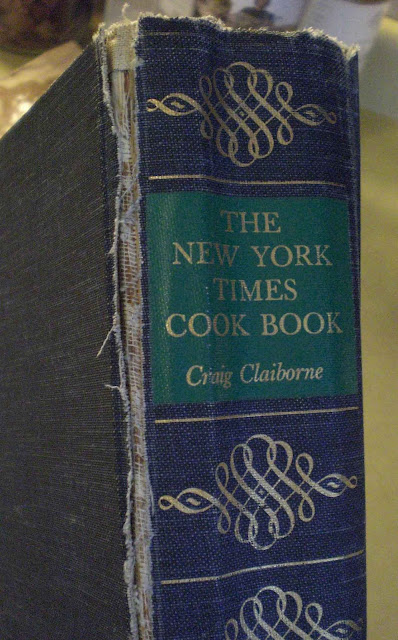
We use the amounts listed for the milk, eggs, etc - but as for the filling, we kind of make that up each time depending on what we have.
1. Fry up some bacon in your trusty cast iron skillet, then set the bacon aside. (Bacon courtesy of a local food co-op we visited while we were driving here in March! It's been in the freezer.)
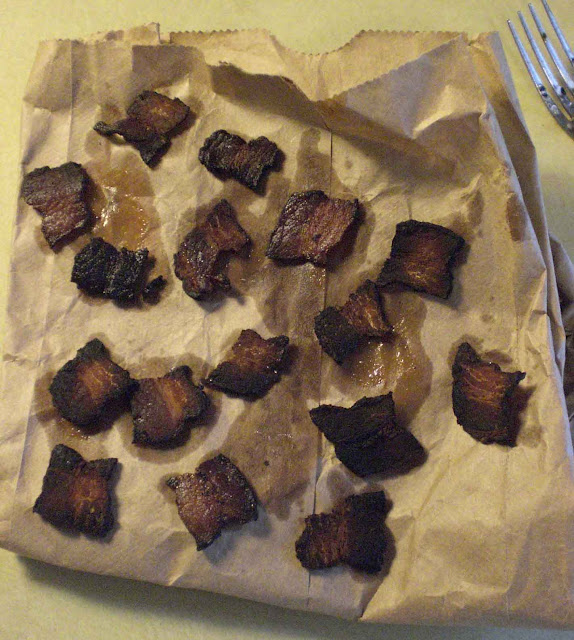
2. Leave the bacon juices in the pan and saute some garlic tips (spears, whatever they're called). Remove the garlic tips and set them aside. (Garlic tips courtesy of our local Farmer's Market.)
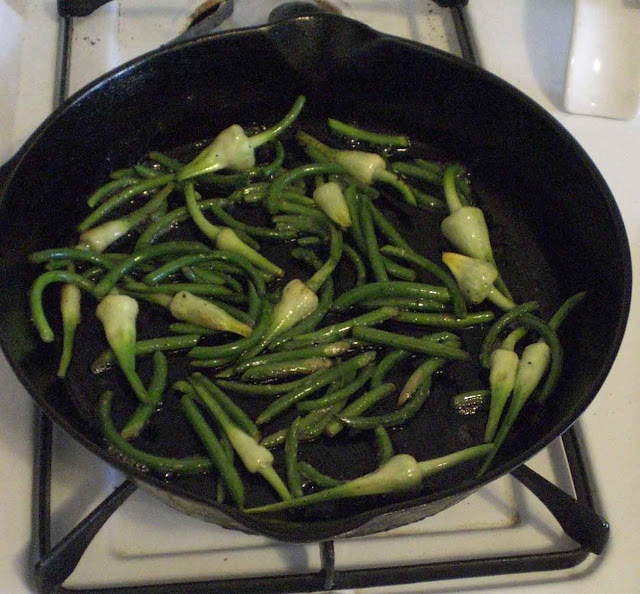
3. In the same pan (or another, whatever you prefer), slice up one onion and saute it till it is wonderfully carmelized and a bit translucent. (Onion courtesy of our CSA...or farmer's market...)

4. Rinse and remove the stems from a bunch of greens and chop these up. Add these to the onions, add a little chicken broth (if necessary) and steam the greens till they're done. (Variety of chard and kale courtesy of our garden out back.)
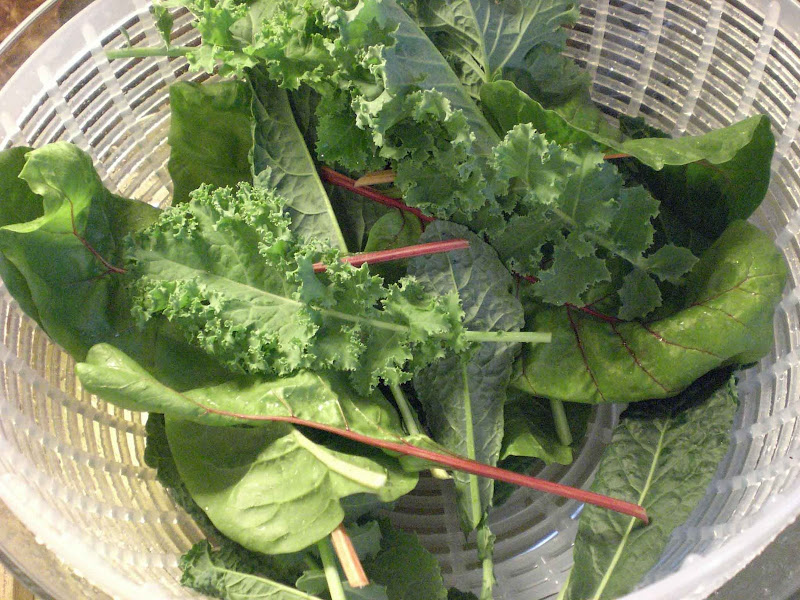
5. While those are steaming, mix the following:
4 eggs, lightly beaten
1 cup heavy cream
1 cup milk
1/4 teaspoon nutmeg
1/2 teaspoon salt
1/4 teaspoon white pepper (we just grate fresh black pepper in)
(Dairy courtesy of several local dairies.)
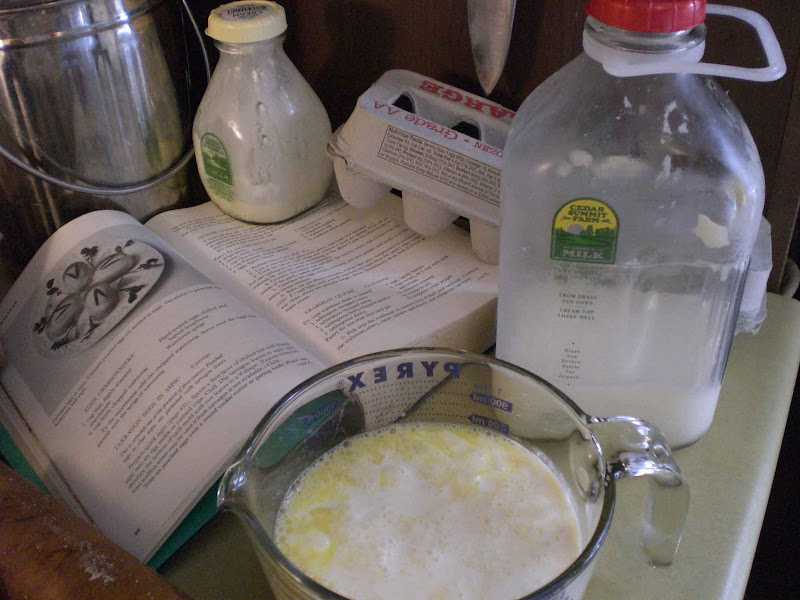
6. Grate 1 cup of Gruyere cheese and 1/4 cup of Parmesan (Uh - the Gruyere is local, but the Parmigiano Reggiano is straight from Italy.)
7. To your pre-baked quiche crust, spread in the garlic tips.
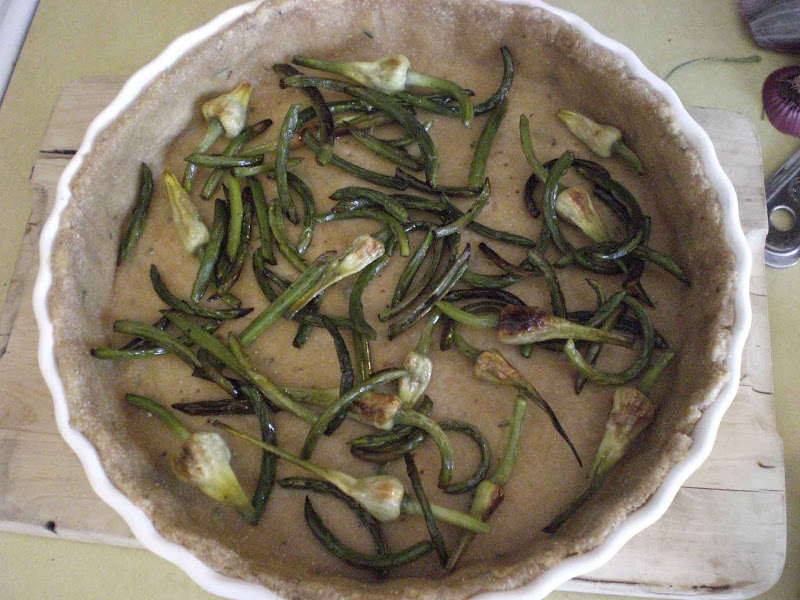
8. Then crumble up the bacon and add that, as well as the onions and greens. (I harvested most of ours and they cooked down to almost nothing. You can put in a whole lot more if you like, and if you end up with extra milk/egg mix that doesn't fit, you can just bake that in a little container on the side.)

9. Then the cheeses.
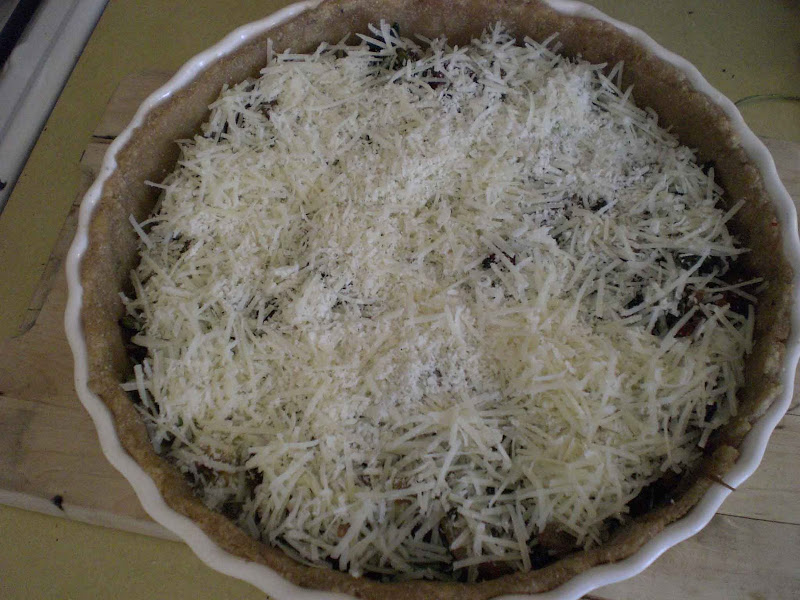
10. Then strain the milk/egg mixture over the rest of the ingredients.
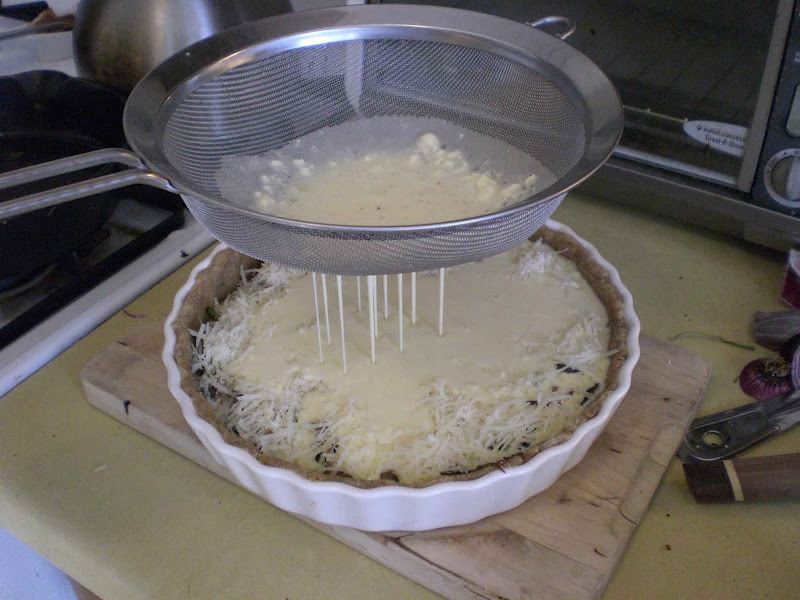
11. Bake for 15 minutes (at 450), then reduce oven temperature to 350 degrees and bake until a knife inserted one inch from the pastry edge comes out clean.
This recipe claims that amount of time will be 10 minutes longer and my mom's recipe claims a short baking time too, but we've never had one cook in less than about an hour. So give yourself lots of time and cover the quiche with foil if it's starting to get really brown on top but still not all the way cooked. With this quiche I waited till it was set a bit and added a bunch of halved cherry tomatoes (courtesy of our garden out back). I wish I'd added more - they were excellent!
